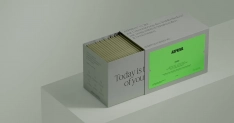Wines from California’s Gold Country: Joan Kautz about Ironstone Vineyards
Located near the former gold mining settlement of Murphys in California, the Kautz family is the fourth generation to run the historic Ironstone Vineyards winery. The portfolio includes grape varieties such as Chardonnay, Cabernet Sauvignon, Zinfandel, Merlot and Cabernet Franc. Ironstone not only impresses with its wines, but also with a unique on-site experience: a museum with the largest gold nugget in the world, an amphitheater for concerts and events and an imposing building in the style of old gold mills. This combination of first-class wines, sustainable cultivation and cultural offerings makes Ironstone Vineyards a special place for wine lovers.
In this interview, Joan Kautz, who is responsible for the worldwide sales and marketing of Ironstone Vineyards, talks about the origins of the winery, the sustainable cultivation of the vineyards and the special features of the wines.
Please introduce yourself briefly: Who are you and what do you do at Ironstone Vineyards?
Joan Kautz: My name is Joan Kautz. First and foremost, I am family (the youngest of four children from John & Gail Kautz, and I have three older brothers). My parents founded Ironstone Vineyards. I am in charge of Global Sales & Marketing for our wine brands. We sell to over 50 countries worldwide.

©Ironstone Vineyards / Alina Tyulyu
Your family is the fourth generation to run Ironstone Vineyards. Take us back to the beginnings: How did it all begin? And how has the winery developed to date? What are the milestones?
Joan Kautz: My grandparents came to the United States from Germany. They came without any money in search of the “American Dream”. They found an opportunity in California for farmwork, so they took it. As they worked incredibly hard, they were able to save enough money to buy a small parcel of land in Lodi, California. This property was for their family farm.

©Ironstone Vineyards
My father, John Kautz took over when he was about 20 years old, as unfortunately, his father passed away. He began to expand the family farm into other “row crops”, such as bell peppers, tomatoes, corn, soybeans and more. He eventually planted sweet cherries in Lodi and learned a lot about the unique micro-climate. In 1968, he decided to plant wine grapes in Lodi. The winery has a reputation for great quality wines and very good prices, as well as being a “destination” for families from around the world.
“Ironstone Vineyards is a premier Calaveras County destination”. What is there to see, experience and taste at your winery?
Joan Kautz: My parents elected to build their winery in a town called Murphys, which is the heart of the 49er Gold Rush. This property was my Grandfather’s, Bauer Kramer from my mother’s side of the family. My parents created a winery with what they loved, such as beautiful gardens, tasting room, deli, 42 foot tall stone fireplace, museum that holds a 19 kg gold piece (gold leaf specimen), the largest in the world of its kind.

©Ironstone Vineyards
They also have a theater pipe organ in the music room, culinary center for cooking demonstrations, outdoor mining museum and amphitheater that holds a summer concert series (seats up to 7,000 people with artists in various genres – country, rock, soul, classic, etc).

©Ironstone Vineyards
“Our wines reflect the diversity of offerings from the Lodi and Sierra Foothills appellations in Northern California” – how exactly?
Joan Kautz: Lodi is a Mediterranean climate with warm summer days and cool evenings due to the proximity to the Pacific Ocean and the Delta Waters. We grow in six of the seven sub AVAs in Lodi. As examples, this offers us the opportunity to focus our Zinfandel grapes in Mokelumne River, our Cabernet Sauvignon in Clements Hills and Pinot Noir in Jahant. It also allows us to offer consistency each year with our wine styles.

©Ironstone Vineyards / Alina Tyulyu
Our Ironstone Lodi “Rous Vineyard” Reserve Ancient Vine Zinfandel comes from vines planted in 1909 offering a truly special wine grown on incredible head trained vines. The Sierra Foothills which is higher in elevation (600-750 meters) offers distinct styles of wines that are rich, full and have a mineral note derived from the iron rich and volcanic sedimentary soils.
Three of your products are now also available in Germany. Why did you make the move to Germany? What do you hope to gain from the market? Who do you work with in sales there?
Joan Kautz: Our Ironstone wines are represented by Weinkonter Freund in Germany. With our German roots, we have a special connection. We are very excited to share our wines to new consumers, introduce California wines, both Lodi and Sierra Foothills.
Let’s talk about the three products: What makes the Reserve Chardonnay – Estate Grown 2021 so special?
Joan Kautz: Selected from the vineyard with small rocky creek bed weathered stones and adjacent to the winery at about 600 meters elevation, the Sierra Foothills Estate Grown Reserve Chardonnay boasts intense mineral qualities of butterscotch, vanilla, ripe apples that finishes with butter toffee and vanilla oak.

©Ironstone Vineyards
Tell us about the Lodi Chardonnay 2022, what makes it special?
Joan Kautz: The Kautz Family was the first to plant Chardonnay in the Lodi region and, today, they grow Chardonnay in several of Lodi’s sub-appellations, including Clements Hills, Mokelumne River and Sloughhouse. These different vineyards provide diverse soils and that, when combined, create a more complex wine than one location alone. The 2022 Ironstone Chardonnay exhibits refreshing aromas of fresh green apples, citrus and tropical fruits. As it dances across the palate, light citrus layered with fresh peaches fills the mouth as soft vanilla and oak notes linger. Good acidity gives it a crisp balance with a creamy medium-length finish

©Ironstone Vineyards
And the Reserve Ancient Vine Zinfandel – Rous Vineyard 2021, why should people try it?
Joan Kautz: This elegant wine starts off with violet notes that swirl with ripe blackberries, brown spices, cloves, caramel and ending with vanilla notes. The Rous Vineyard, grafted entirely onto St. George rootstock, was planted in 1909 making this vintage a spectacular 112-year-old vines! This 10 acre, single-source vineyard is in the sub-appellation of Mokelumne River. These magnificent, twisted, gnarly, head-trained Zinfandel vines yield 2.5 tons per acre of fruit with incredible concentration of flavors.

©Ironstone Vineyards
But it wasn’t always this way. When Craig Rous purchased the vineyard in 1994, he still had two years of it being under contract as White Zinfandel. Once this contract expired, he started the process of transforming it back into a Red Zinfandel vineyard by specialized pruning. Already under way, he changed it from furrow to drip irrigation and added solar panels to fuel the well. Craig’s method of “bug control” is the numerous lizards and spiders throughout the vineyard. The soil is a mixture of very sandy and sandy loam.
What other plans do you have for this year? For example, will you be bringing more products to Germany?
Joan Kautz: We want to focus on the wines that are in the market and help to introduce them to the German consumers. Our goal is to help build the California wine presence overall and our wines specifcally. We have a great partner and are looking forward to building the Ironstone name.
Ironstone Vineyards | Website | Facebook | Instagram
+++ We would like to thank Joan Kautz for the open and very interesting interview! If you also have an interesting brand, then we should talk. Just send us an e-mail with the subject “about-drinks interview” toredaktion@about-drinks.com – we look forward to hearing from you! +++























